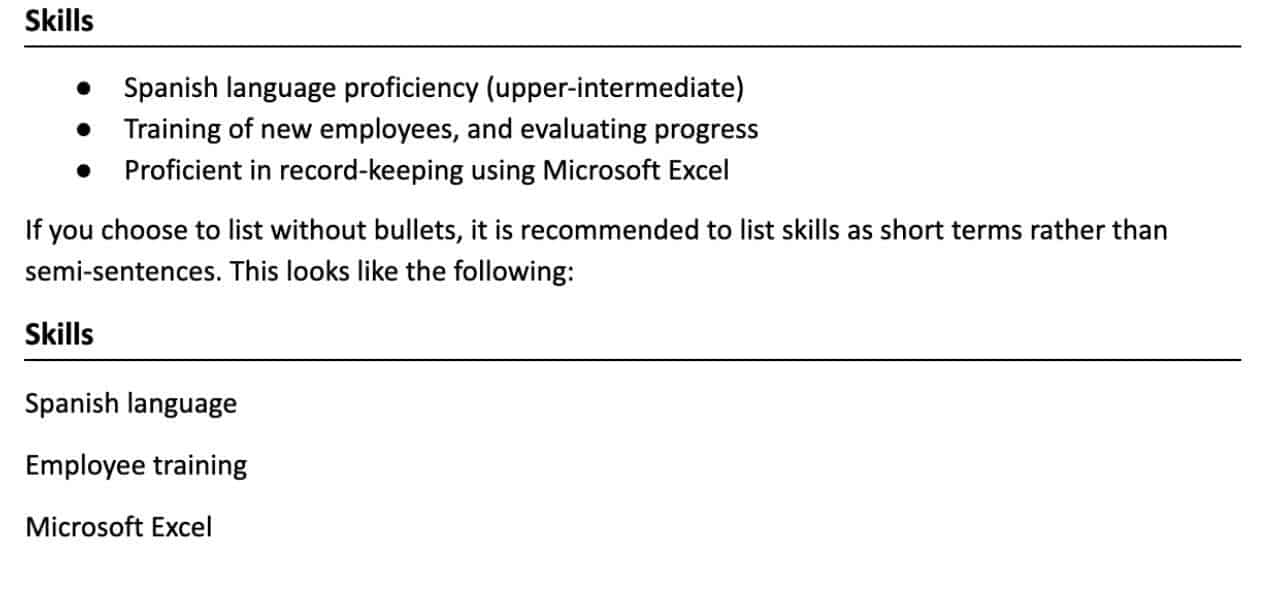One of the most important structural rules for every resume is that you need to list your responsibilities of each job as separate points.
Most people choose to make use of bullet points to keep their resumes tidy, but how many points should you be listing per job? You should be careful not to clutter your resume with them.
“How Many Bullet Points Should You Use Per Job on a Resume?”
When formatting the experience section, each job should have close to the same number of bullet points. Each job should have around 3-4 points, however this number can increase if you do not have many jobs to list. Use sub-bullet points only in rare instances of needing more information.
Resumes can and should include many different sections: the header, education, volunteering, experience, skills, certifications, awards, and patents sections. For this reason, each section needs to be kept brief.
The experience section is arguably the most important section on a resume, as it includes work experience over a wide span of years.
While it is usually the largest section, it is important not to make each job so long that you cannot fit other important sections into the recommended two-pages maximum.
Keep each job to 3-4 bullet points, and only include more than that if you have very few work experiences.
If you find that you have more to say, try to include some of your points in the skills section instead to keep one section from becoming overwhelming.
Can you use sub-bullet points for jobs on a resume?
Sub-bullet points can be used in the experience section but should be reserved for very specific circumstances where additional information is necessary. This may include instances such as including a certification number or including a publisher or volume number for a publication.
Like when using abbreviations, bullet points should help a section look neat and concise.
An example of this would look as follows in the case of a patent:
Experience
XYZ Trading Company (1-20xx) – (10-20xx)
Assistant Manager – Human Resources Department
- Managed a team of 100+ employees on a seasonal rotating basis
- Oversaw payroll and maintained financial records spanning seven years
- Co-developed and received a patent for an integrated financial record keeping system
- US patent No. 123,456,789 – Jan 1, 20xx
Formatted on your resume, it should look like the following:

Key takeaways from this example are that we stick to three bullet points, and we only use a sub-bullet point if there is information that is necessary to verify the claim.
Do not include many sub-bullet points as it will make the section look cluttered.
Can you put bullet points in the skills section?
The skills section can be formatted in a few different ways, but it is common to use bullet points. Some people choose to use bullet points to format each of their skills. Some choose to not use bullet points unless additional information about a skill is necessary.
An example of having every skill bulleted is as follows:
Skills
- Spanish language proficiency (upper-intermediate)
- Training of new employees, and evaluating progress
- Proficient in record-keeping using Microsoft Excel
If you choose to list without bullets, it is recommended to list skills as short terms rather than semi-sentences. This looks like the following:
Skills
Spanish language
Employee training
Microsoft Excel
Here’s how this latter example should look like exactly (formatted on your resume!):


Hey fellow Linguaholics! It’s me, Marcel. I am the proud owner of linguaholic.com. Languages have always been my passion and I have studied Linguistics, Computational Linguistics and Sinology at the University of Zurich. It is my utmost pleasure to share with all of you guys what I know about languages and linguistics in general.

